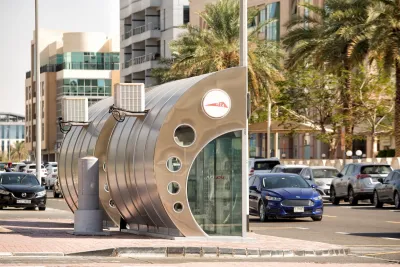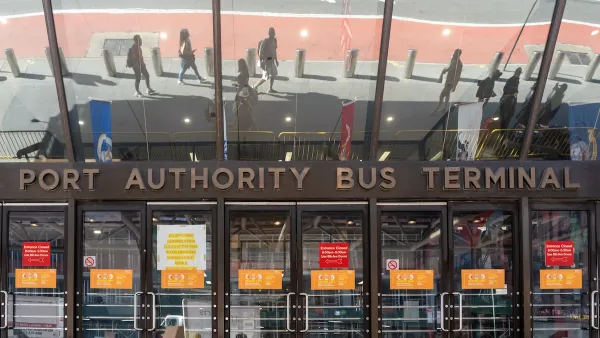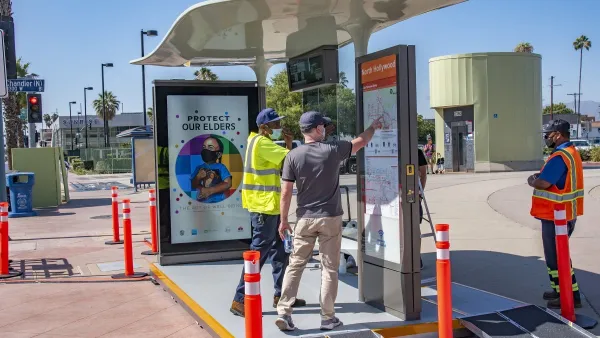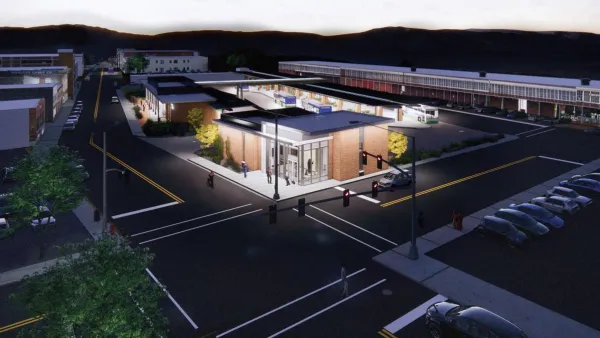While some rail stations get the starchitect treatment, most bus stops fail to offer aesthetic value. One study suggests this is a mistake.

An Italian study published in Transportation Research Interdisciplinary Perspectives shows that the aesthetics of bus stops can affect how likely riders are to use them. As Sonja Wind notes in Bloomberg CityLab, the researchers used virtual reality helmets to offer bus riders two different experiences.
According to lead author Armando Cartenì, “It means that there are other attributes, in addition to the traditional ones of waiting time, travel time and ticket cost, to attract users to bus transport.” The study found that respondents were willing to pay an extra 25 to 40 percent for fares to use more attractive facilities.
“Apart from increasing passenger satisfaction and ticket revenue, building more attractive bus facilities would draw more riders to public transportation, reducing emissions and congestion associated with private car use.” Yet, especially in the United States, most bus stops have minimal facilities like shade and seating, let alone aesthetic elements.
FULL STORY: What a Beautiful Bus Stop Can Do

National Parks Layoffs Will Cause Communities to Lose Billions
Thousands of essential park workers were laid off this week, just before the busy spring break season.

Retro-silient?: America’s First “Eco-burb,” The Woodlands Turns 50
A master-planned community north of Houston offers lessons on green infrastructure and resilient design, but falls short of its founder’s lofty affordability and walkability goals.

Delivering for America Plan Will Downgrade Mail Service in at Least 49.5 Percent of Zip Codes
Republican and Democrat lawmakers criticize the plan for its disproportionate negative impact on rural communities.

Test News Post 1
This is a summary

Test News Headline 46
Test for the image on the front page.

Balancing Bombs and Butterflies: How the National Guard Protects a Rare Species
The National Guard at Fort Indiantown Gap uses GIS technology and land management strategies to balance military training with conservation efforts, ensuring the survival of the rare eastern regal fritillary butterfly.
Urban Design for Planners 1: Software Tools
This six-course series explores essential urban design concepts using open source software and equips planners with the tools they need to participate fully in the urban design process.
Planning for Universal Design
Learn the tools for implementing Universal Design in planning regulations.
EMC Planning Group, Inc.
Planetizen
Planetizen
Mpact (formerly Rail~Volution)
Great Falls Development Authority, Inc.
HUDs Office of Policy Development and Research
NYU Wagner Graduate School of Public Service





























